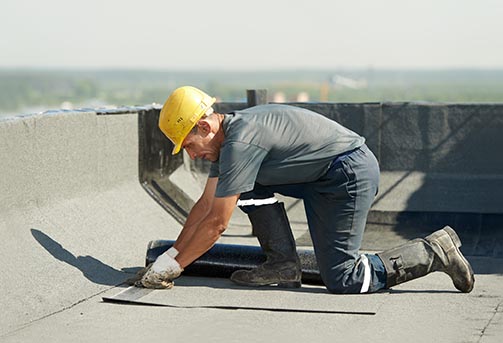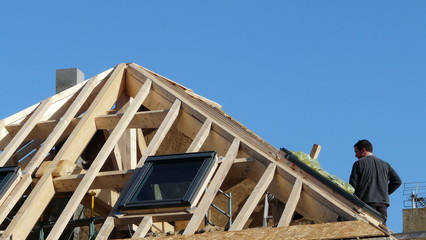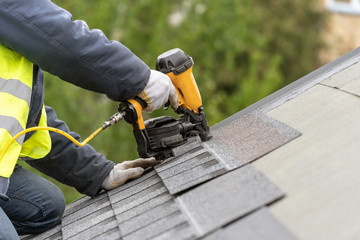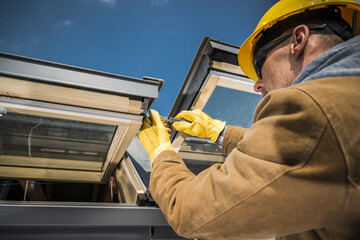Whether you are interested in roofing, repairing, or replacing your roof, there are certain things you need to know. These include: what tools are used, education requirements, and low-slope roofs.
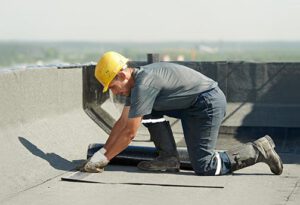
Roofing systems that are low slope are generally designed to resist water accumulation. Unlike steep roofs, which have a steeper pitch, low-slope roofs have a slope of approximately 1/4 to 1/2″ per foot. This allows the system to resist water and other weather conditions. A membrane covering is used for this purpose, which is applied as continuous sheets, bonded together with specialized adhesives and heat processes.
Metal roofs are an effective option for low-slope roofs with a pitch of between 2/12 and 4:12 degrees. These roofs can be constructed of copper, tin, or steel panels. They can also be aesthetically pleasing and provide a variety of functional features. However, these roofing materials are often more expensive.
Thermoplastic roofing is one of the fastest-growing types of low-sloped roofing. These are heat-welded single-ply membranes that are energy efficient and environmentally friendly. They are Energy Star products and may qualify for federal tax rebates. These membranes are durable and last up to 50 years when installed properly.
The built-up roof, also known as tar and gravel, is a traditional form of low-sloped roofing. These roofs were first manufactured in the late 1800s, but they have since been surpassed by other forms of roofs. The traditional tar and gravel roofing material was not very effective. Today, this type of roof is being replaced by other materials, such as rubber and thermoplastic.
Membrane roof systems are the most common types of low-sloped roofing. They are usually 20 feet wide and consist of a synthetic water-repellent membrane. This product is manufactured in a factory setting and can be installed as a single-ply or as a full-coverage system. These products are available in white or in colors that coordinate with other roof products. They are reflective and can help keep a room cool.
There are also metal roofs that are specifically designed for low-slope applications. These include the screw-down roof and the standing seam roof. Some of these products require machine seaming during installation. The benefits of a metal roof are that it is extremely durable and is more resistant to the damaging effects of the sun and wind.
It offers several products that are designed for residential low-slope roofing. They include APP Modified Bitumen systems and the Flintlastic SA roofing system, which is an SBS-modified bitumen roofing system. These systems have self-adhering properties, are easy to install, and feature colors that coordinate with other CertainTeed shingles. Depending on the manufacturer, these products may also be eligible for federal tax rebates.
There are a number of other low-slope roofs that are made up of special materials. They include insulation and flashing, as well as vapor retarders. All of these materials must be engineered to withstand the weather and UV radiation. They must also be watertight. These roofs should be inspected annually. A leak could lead to water damage, which can cause serious problems.
Roofing tools are vital to the job of installing roofs on buildings. They include caulking guns, hammers, and other hand tools. Some of these tools are also used to repair existing roofs. However, they can be dangerous if not used properly. There are safety regulations to follow, and roofers should wear safety gear at all times.
Among the roofing tools that are used, there are some that are used to remove old shingles. These tools are typically hand tools, and they have special hooks to help hold thicker material. Some of these tools also come with a long handle to keep the knuckles clear when cutting the shingles.
There are several different types of hammers that are used by roofers. Most of the time, a hammer is used to hit nails. It is also used to attach shingles to the layers below. The hammer has a built-in shingle gauge to help position the shingles. The hammer also has a blade that is at one end of the head.
Other tools that are used by roofers are wood splitters and pitchforks. These tools are usually used for fastening shingles on buildings or for removing them. There are even some that have a pivot-type bracket spade that is designed to lift the roofing materials.


